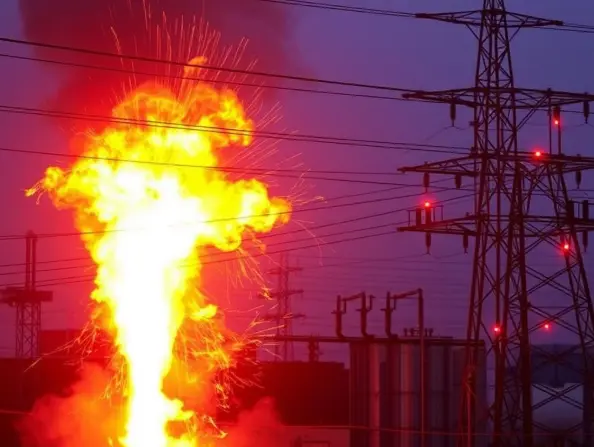
Introduction
Relays are protective elements that help control faults in a power system. Proper relay coordination helps isolate the fault sections from healthier sections in a power system.
Being a fundamental part of ensuring reliability and operational continuity, the strategic configuration of protective relays is imperative in the design of a power system.
One way to ensure that the relays are working properly is to conduct a relay coordination study at different stages of the power system’s lifecycle.
The importance of relay coordination study in a power system can be summarized as:
- Ensure System Reliability
If the relays in a power system don’t work in coordination, the chances of disruptions in the system escalate. On the other hand, proper coordination of these protective devices ensures that fault is isolated on time maintaining power supply in the healthier sections.

- Protect system elements
Short circuits and overloads are common faults in any power system. They can damage critical components like transformers, cables, generators, etc. Protective device coordination ensures that these devices are isolated from faults and operational safety is maintained.

- Prevent Cascading Faults
If the protective relays work in a coordinated manner, small faults can be prevented from escalating into large-scale incidents. Relay coordination thus protects the system from cascading faults.
- Ensure Workplace Safety
Electrical hazards are a serious threat in any large facility and industry, as a whole. Arc flashes, short circuits, etc can result in injuries to personnel and even fatalities. Relay coordination helps prevent this to a large extent by considerably reducing the faults in the system persist.
- Minimize Downtime
Maintaining uptime is critical to industries like hospitals and data centers. What bet way to achieve this than isolating fault conditions? Vital operations can be sustained and uptime maintained if the relays in the power system work in cohesion.
“A relay Coordination study entails a systematic evaluation to ensure that the protective relays are working in a coordinated manner in the electrical system.”
- Reduce Arc flash incidents
Arc flashes are serious threats to electrical safety in any facility. Relay coordination can help mitigate the arc flashes to a great extent by reducing the incident energy levels and limiting the fault durations effectively.
- Optimize the system performance
Disruptions, that are uncalled for result in reducing the power quality in the system. Relay coordination is one of the key factors in restoring the overall efficiency of the power system.
- Adapt to new upgrades in the system
Ensuring proper coordination of relays helps the power system grow and evolve. A well-coordinated relay system can accommodate changes in loads and updated settings and configurations.
- Compliance with standards
A well-maintained electrical system follows the standards of electrical safety in the USA like OSHA, NFPA 70E, and IEEE. Adopting the best practices and frameworks put forward by these standards helps facilities ensure safety and reduce legal liabilities by and large.
- Ensures seamless Renewable Energy integration
As industries are focusing more on sustainability and renewable energy, relay coordination ensures that fault currents contributed by inverters and distributed generation are managed effectively. It also supports the reliability of hybrid systems and microgrids.
“A relay coordination study in the USA is an essential part of the maintenance, operation, and design phases of a power system. The study involves evaluating fault current levels, determining appropriate relay settings (e.g., pickup currents, time delays), and analyzing time-current characteristic (TCC) curves to achieve selective tripping.”
Care Labs, USA
Relay coordination study must be adopted by industries across the USA to ensure that the system and workers are protected. Care Labs offers comprehensive power system study and analysis services in the USA. We use technology like ETAP for relay coordination simulations and help companies overcome the challenges.
Early Signs of Relay Coordination Changes in the System
Facilities must identify the early changes in relay coordination and take necessary steps to restore system stability. Some of the signs that these protective devices are not working properly are:
- Multiple relay trips for a single-fault event
- High fault currents when the system is modified
- Changes in system configuration need to be analyzed properly
- Increased fault clearance times result in strain on the system components.
- Changes in load patterns
- Outdated settings not complying with the latest standards.
- Equipment aging leads to performance issues
- Fluctuating voltages affecting the system stability
If your facility is exhibiting any of the above signs, feel free to contact us. Our professionals will guide you in transforming the power system challenges into incredible solutions.
admin
Author, Care Labs

The Importance of Relay Coordination in Power System
Introduction Relays are protective elements that help control faults in a power system. Proper relay coordination helps isolate the fault sections from healthier sections in a power system. Being a fundamental part of ensuring reliability and operational continuity, the strategic configuration of protective relays is imperative in the design of a power system. One way […]

Which of these Facts About Arc Flashes are True?
Introduction In electric hazards, arc flashes are among the most dreadful threats. Despite their criticality, many myths surround arc flashes. Although IEEE and NFPA continuously strive to enhance awareness, five to ten arc flashes happen in the USA daily. We, at Care Labs understand the importance of maintaining a healthy electrical infrastructure. To help companies […]

